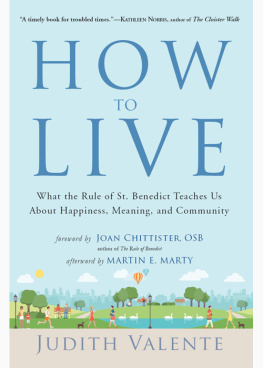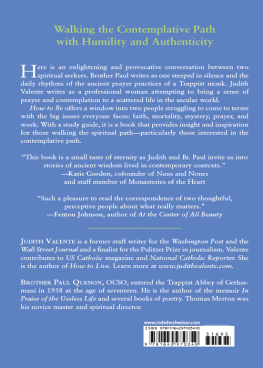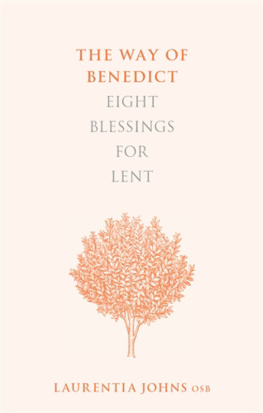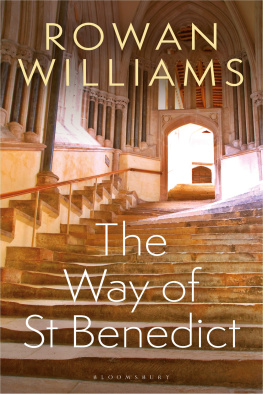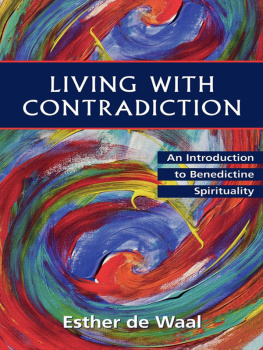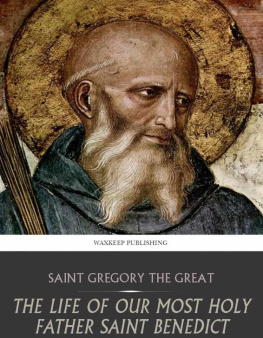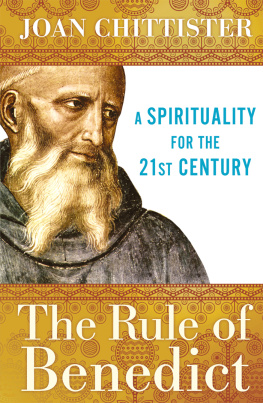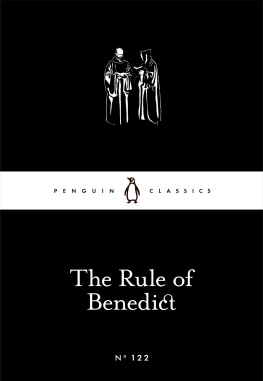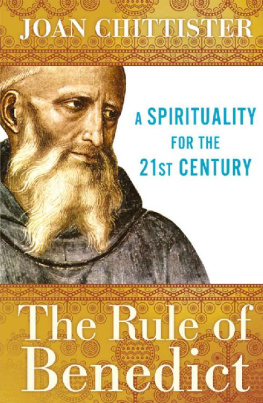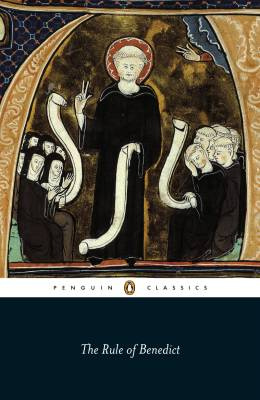
PRAISE
FOR HOW TO LIVE
This is a timely book for troubled times, showing how the values and practices established by St. Benedict in the 6th century can help us lead happier lives. A self-professed workaholic, the author allows the reader to see how her life has changed for the better since she took this ancient wisdom to heart.
KATHLEEN NORRIS, author of The Cloister Walk, Dakota: A Spiritual Geography, Acedia and Me, and Amazing Grace
To have such a gifted writer live and report through the lens of The Rule of St. Benedict is a blessing for all of us. Judith Valente offers more than perspective. Her life's work is monastic. To read, reflect, and report is the role of a professional journalist. As an author and journalist, Valente has The Rule of Benedict for her editor. What a gift for us.
MARY MARGARET FUNK, author of Thoughts Matter, Tools Matter, Humility Matters, and Out of the Depths
Judith Valente has a knack for making the ancient Rule of St. Benedict come alive as a guidebook for today. With many examples and personal anecdotes, her presentation is insightful, delightful, and very honest. You will find yourself chuckling, but then checking to see where you've been hit.
JEROME KODELL, author of Don't Trust the Abbot: Musings from the Monastery and Life Lessons from the Monastery
Like all of Judith Valente's writing, this beautiful actualization of The Rule of St. Benedict is accessible, inviting, challenging, inspiring, and wise. Even if you've never once set foot in a Benedictine monastery, this book will help you live a more contemplative and centered life in the busiest of worldsyour own.
JAMES MARTIN, SJ, author of Jesus: A Pilgrimage
How to Live is a warm, inviting, and accessible introduction to the wisdom of Saint Benedict and its continuing relevance for our time. Whether you are new to The Rule or have been following the Benedictine path for many seasons, this book will enrich you with its insights and charm.
CARL MCCOLMAN, author of The Little Book of Christian Mysticism and Answering the Contemplative Call
For those of you who suspect that it is high time to rise from sleep this book holds much promise. Filled with the practical wisdom of St. Benedict, it is a work that can help you discern ways to enrich your daily life. With keen insights into monastic living, the author shares her own journey of discovering that The Rule of Benedict is not just for monks.
MACRINA WIEDERKEHR, author of Seven Sacred Pauses

For Thomasita Homan, OSB, who brought me to The Rule.
And, as always, for my husband, Charley.
Copyright 2018
by Judith Valente
Foreword copyright 2018 Joan Chittister
Afterword copyright 2018 Martin E. Marty
All rights reserved. No part of this publication may be reproduced or transmitted in any form or by any means, electronic or mechanical, including photocopying, recording, or by any information storage and retrieval system, without permission in writing from Red Wheel/Weiser, LLC. Reviewers may quote brief passages.
Cover design by Jim Warner
Cover photograph Shutterstock elenabsl
Interior by Maureen Forys, Happenstance Type-O-Rama
Typeset in Adobe Garamond Pro and Trajan Pro
Hampton Roads Publishing Company, Inc.
Charlottesville, VA 22906
Distributed by Red Wheel/Weiser, LLC
www.redwheelweiser.com
Sign up for our newsletter and special offers by going to www.redwheelweiser.com/newsletter.
ISBN: 978-1-57174-798-3
Library of Congress Cataloging-in-Publication Data available upon request.
Printed in Canada
MAR
10 9 8 7 6 5 4 3 2 1
CONTENTS
ACKNOWLEDGMENTS
I wish to express gratitude to Lisa Breger and Annie Parker for being early readers of the manuscript; Mary Lou Kownacki, OSB, Mary Ellen Plumb, OSB, and Anne McCarthy, OSB for reviewing the manuscript for accuracy; Joan Chittister, OSB for her insightful introduction; Kathleen Norris, Macrina Wiederkehr, OSB, and Mary Margaret Funk, OSB for their inspirational work on The Rule; Jane Hagaman of Red Wheel/Weiser and Addie Talbott for their careful editing; Greg Brandenburgh of Hampton Roads Publishing, without whose vision the book would not be possible; my agent, Amanda Annis of Trident Literary Agency, for her unwavering belief in this project; Ray Clem of Atchison for his cheerful support of me and all things Benedictine; the Benedictine sisters of Mount St. Scholastica for modeling The Rule for me; and my beautiful husband, Charles Reynard, for being my best editor and best friend.
Editor's Note: The epigraphs in this book are all taken from The Rule of St. Benedict. The chapter titles are noted in each one.
Translations of The Rule are adapted from A Reader's Version of The Rule of St. Benedict in Inclusive Language. Edited by Marilyn Schauble, OSB and Barbara Wojciak, OSB. Benetvision. 1989.
FOREWORD
T he United States, young and bustling, new to the world, and racing to become something fresh and meaningful, is impatient with age. We are a living experiment in innovation and uniqueness. Europe and other older civilizations, on the other hand, are studies in transformation and tradition. They don't bulldoze the past to put up something new; they build on it from within and in the process make way for the new even as they preserve the old. Clearly, the underlying difference between the character of American cities and the cast and quality of European cities is obvious: it is the way each of these cultures deals with time.
The distinction is worth contemplating on more levels than one. The lesson to be considered here has as much to do with spiritual awareness as it does with architecture. It has something to tell us about the way we all view time.
Time is a continuum of empty ages filled only by the substance we bring to it ourselves. The temptation of every age is to discount the old, to worship at the shrine of the new. But the value of time lies as much in what we ourselves bring to the understanding of time as it does in what time brings to us. It is our awareness and interpretations of time that determine our own place in the development of the human spirit, of the spiritual impact of yesterday on tomorrow.
The deep down spiritual truth is that time is always and forever an invitation to growth. Whether the wisdom of the ages shapes us, or not, determines the nature of our civilization, the depth of our culture, the spiritual filter through which we ourselves, in our own time, mold the character of the world around us. If, as individuals, we understand time as the storehouse of our souls, explore it for answers to perennial questions, and test it for its value, then we stand to become the bearers of the wisdom of the ages. If not, we simply join the ranks of societies before us that walked through life untouched by time. We become one more excursion through epochs we failed to fathom, and so end devoid of the substance they were meant to bring us.
And yet, if we make the effort to trace the chain of life and thought and ideals that have brought us as a people from one moment in history to another, we make ourselves part of the passage to a healthy tomorrow. We are prepared, then, to go in our own timeswhere there is no roadand leave a path.
Next page
